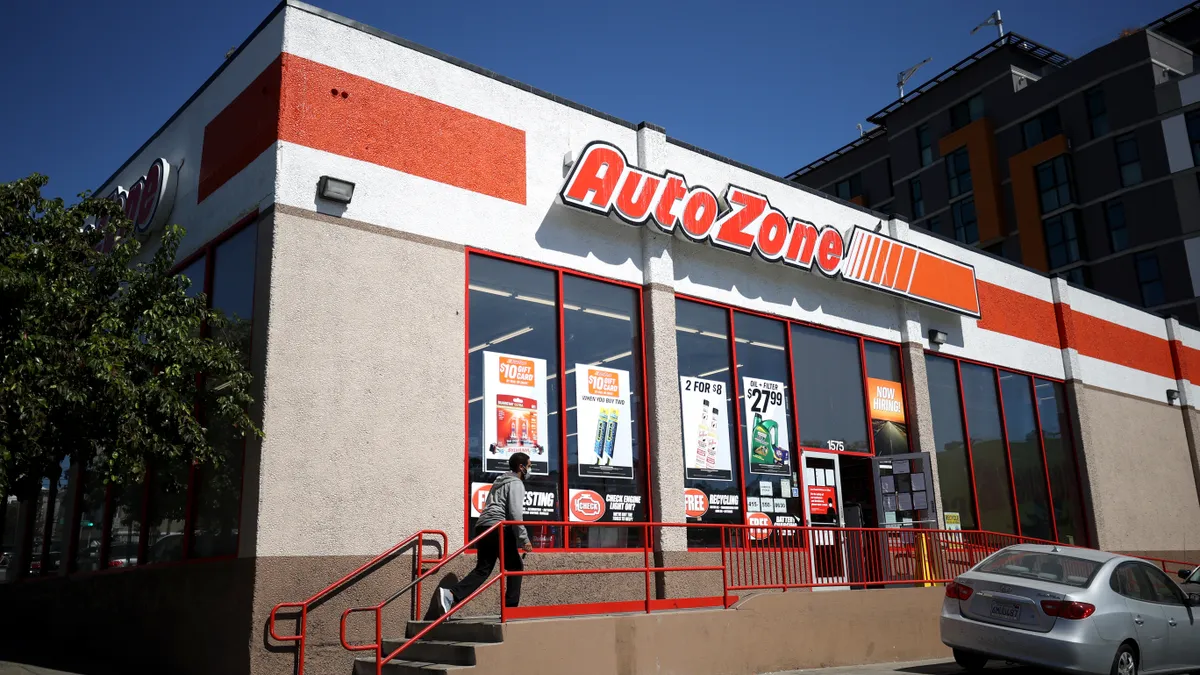Dive Brief:
- AutoZone is halfway toward its goal of opening 200-plus mega hubs in its network as part of a long-running plan to improve inventory placement and expand parts availability, executives said on a Feb. 27 earnings call.
- The auto parts retailer currently has 101 mega hubs, which are stores that can carry up to 110,000 SKUs and quickly replenish inventory at satellite locations in nearby markets.
- "The fulfillment capability for the surrounding AutoZone stores is giving our customers access to tens of thousands of additional parts and lifting the entire network," CFO Jamere Jackson said of the mega hubs.
AutoZone more than doubles mega hub locations
Dive Insight:
The success of AutoZone's mega hub strategy has led the retailer to expand upon its original ambitions. In September 2021, Jackson said the company aimed to grow its mega hub network from 58 locations to more than 100.
AutoZone extended that goal when it saw that opening multiple mega hubs in major metropolitan markets wouldn't cannibalize sales between the locations, Jackson said on February's call.
“[It] suggested that the number of mega hubs that we could actually operate was significantly higher," Jackson said. "And if you'll recall, we had mega hub targets that went from 100 to north of 200 over a very short period of time."
AutoZone has more than 6,000 U.S. stores with access to mega hubs' products, which can provide them with inventory coverage multiple times daily or on an overnight basis, per the company's annual report. Hub and mega hub locations utilized up to 85% of their space for hard parts inventory, compared to satellite stores reserving up to 50% of space for hard parts.
"Those put hard-to-find parts in the market where we can get those parts to our commercial customers, in particular, faster," President and CEO Phil Daniele said on the earnings call.
It will take AutoZone "quite a few innings" to reach its goal of more than 200 mega hubs given their longer setup time, Daniele said. However, he added that the endeavor will be worth it, allowing the company to get parts to its customers faster and generate more sales.
"The faster we can get those hard-to-find parts into the shop, the better we will grow market share," Daniele said.














